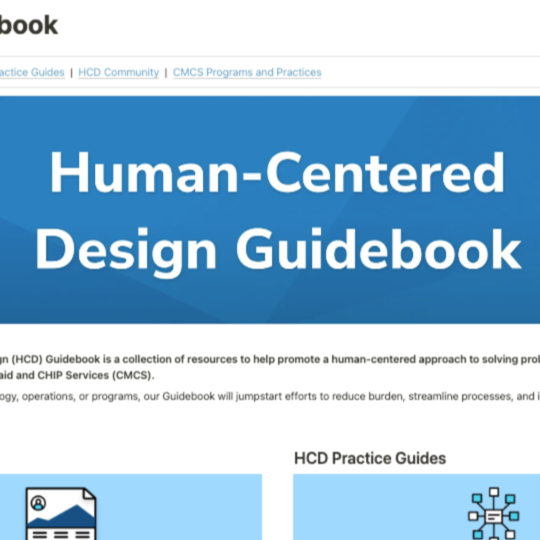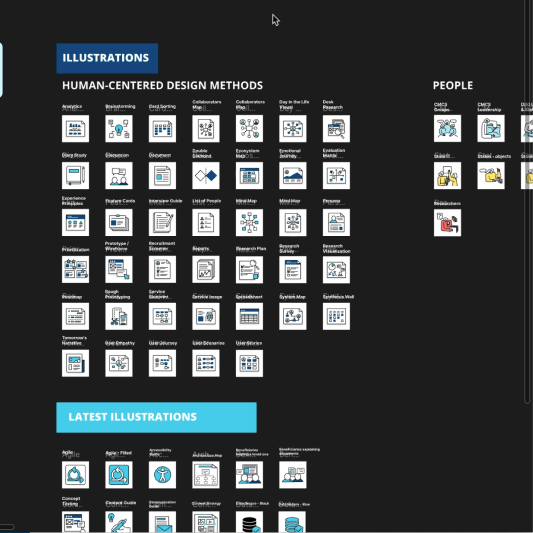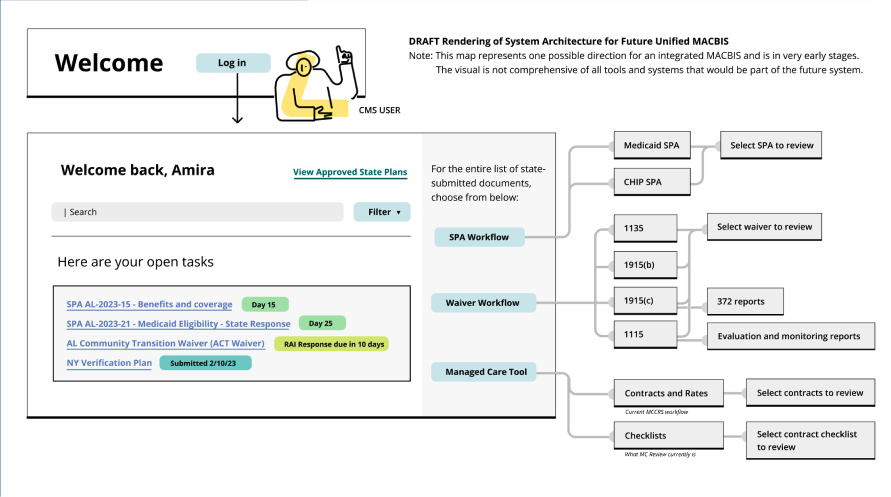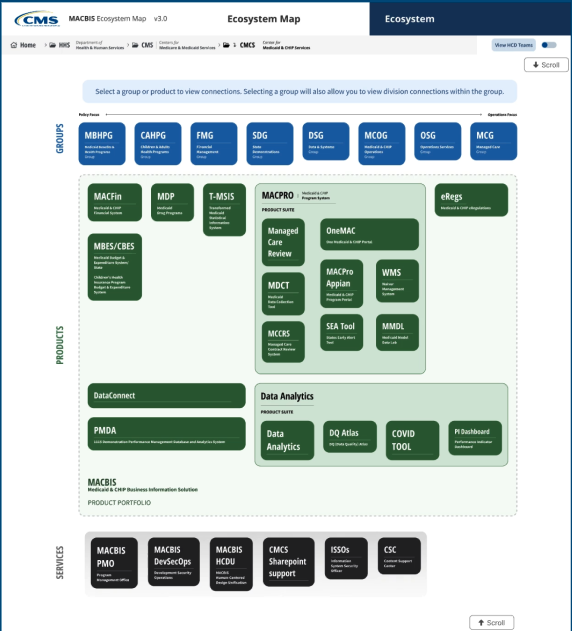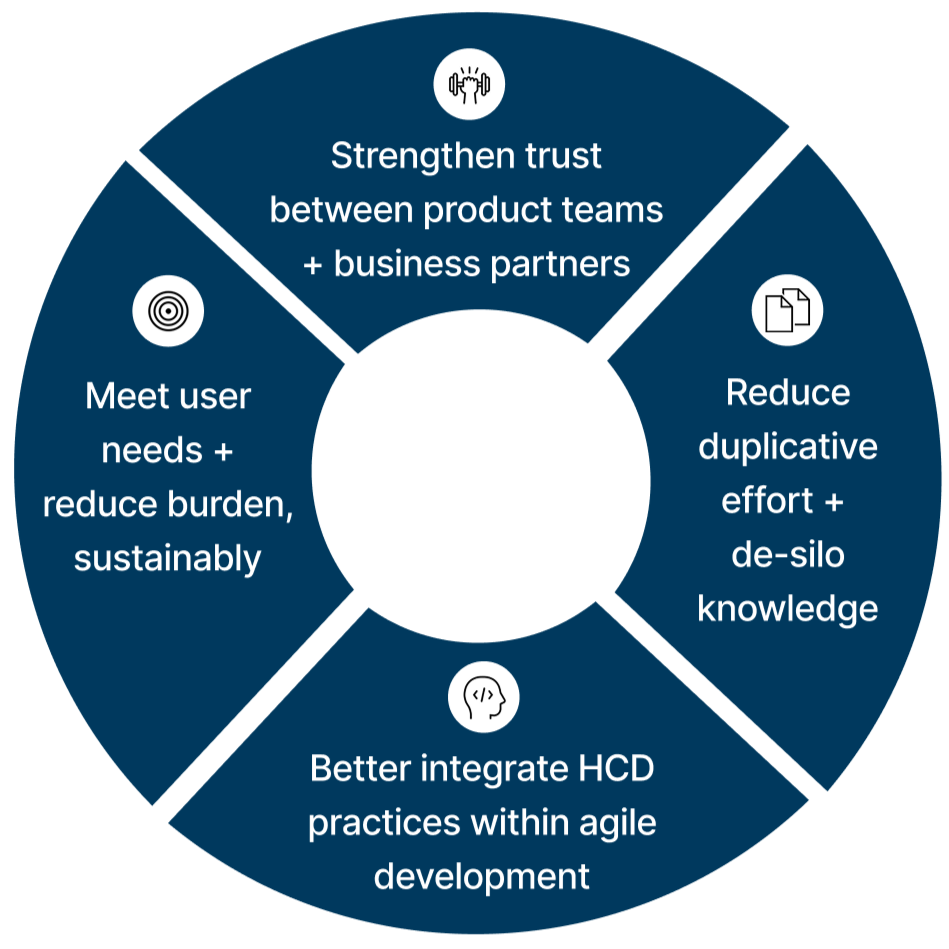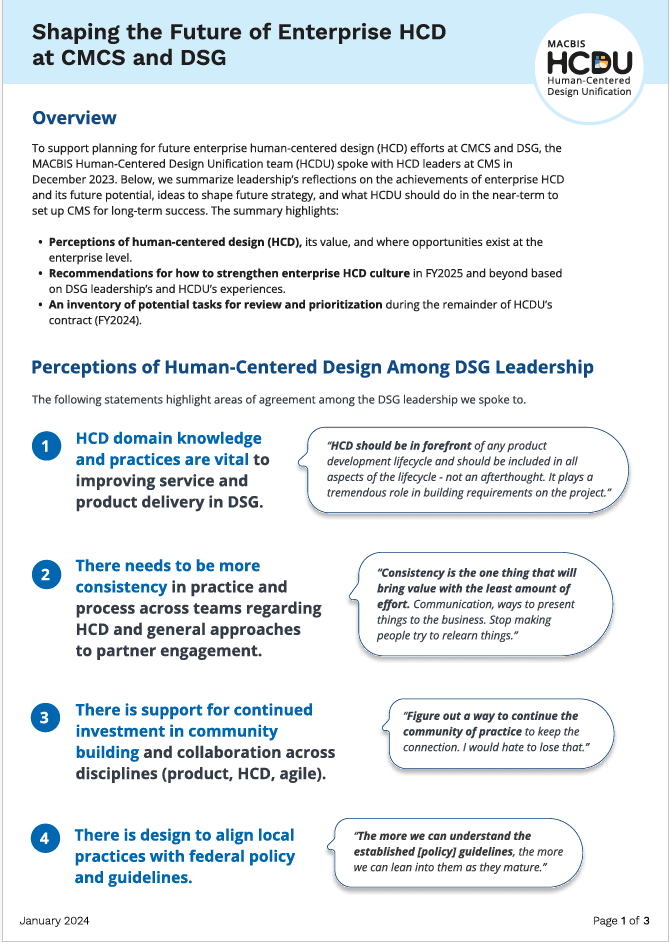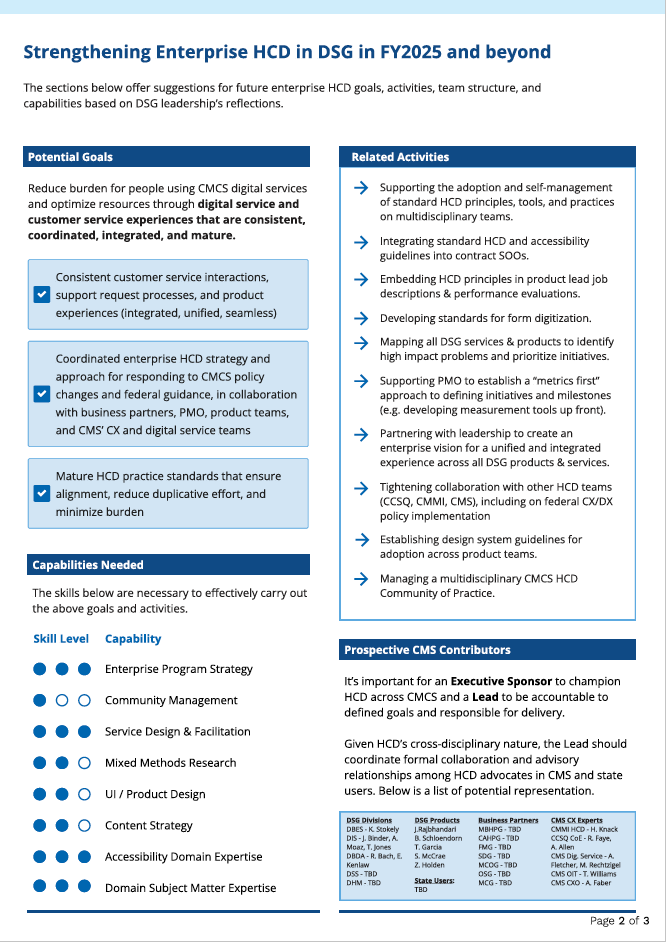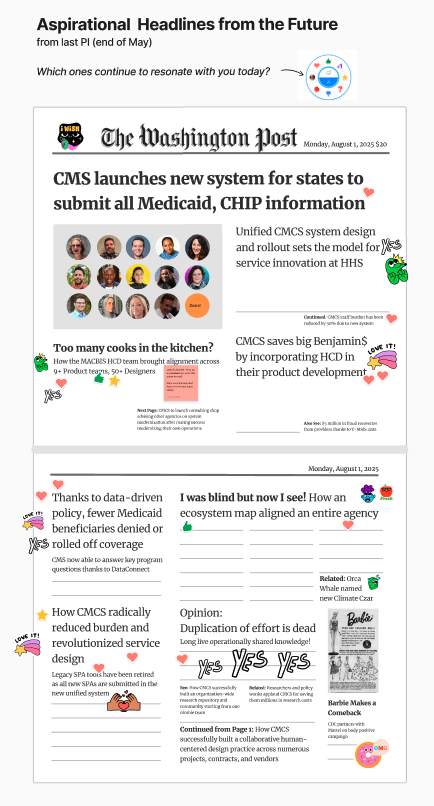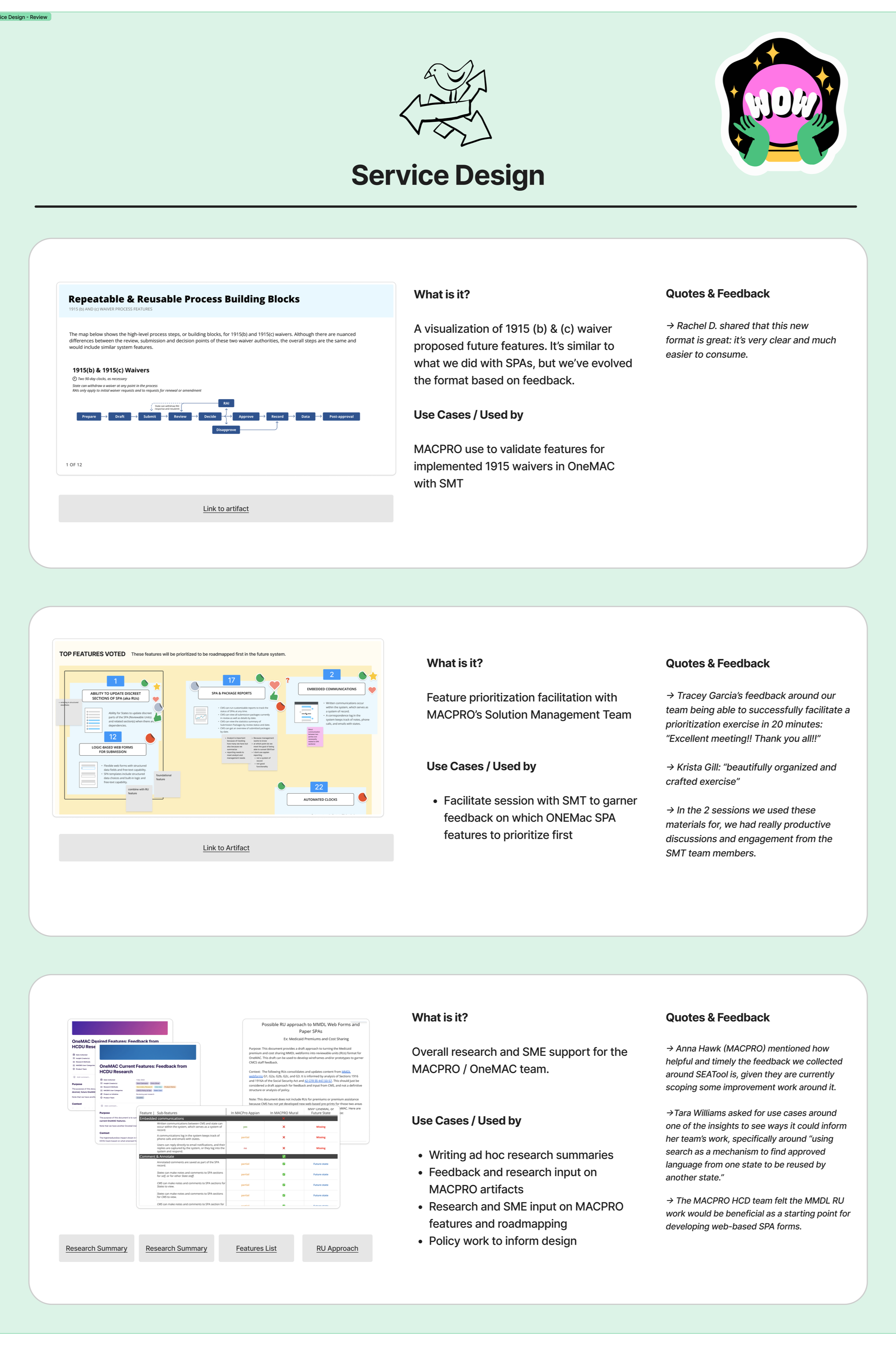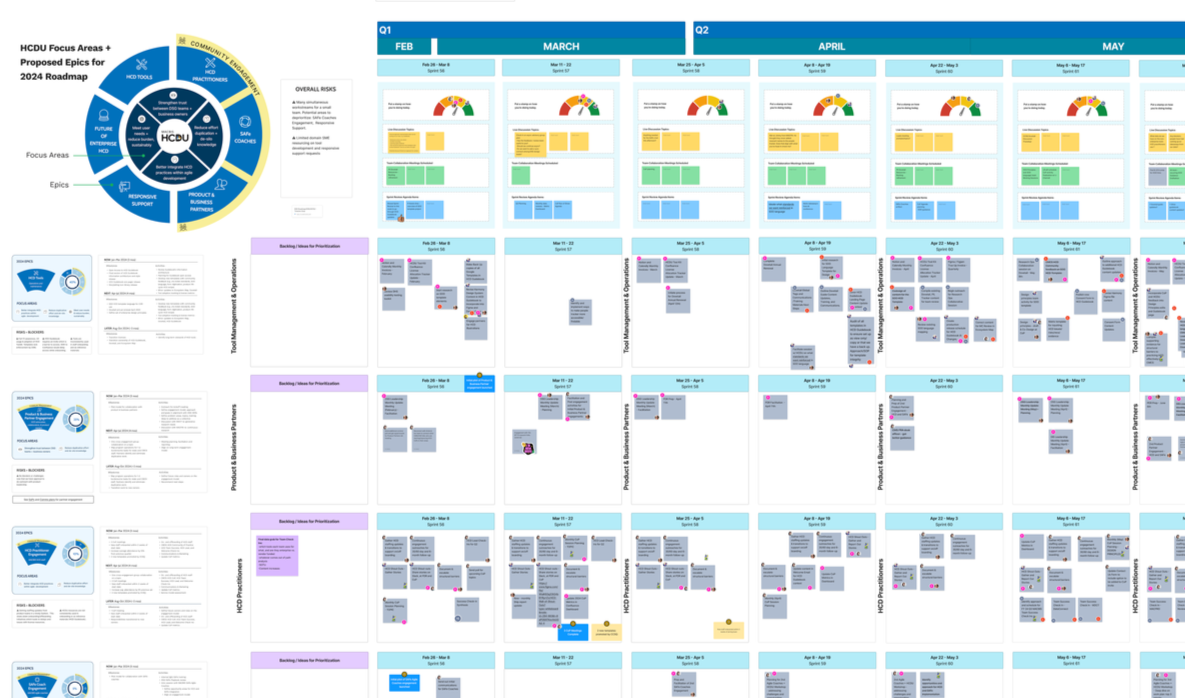Team Leadership
Unifying the experience across siloed data systems via enterprise human-centered design
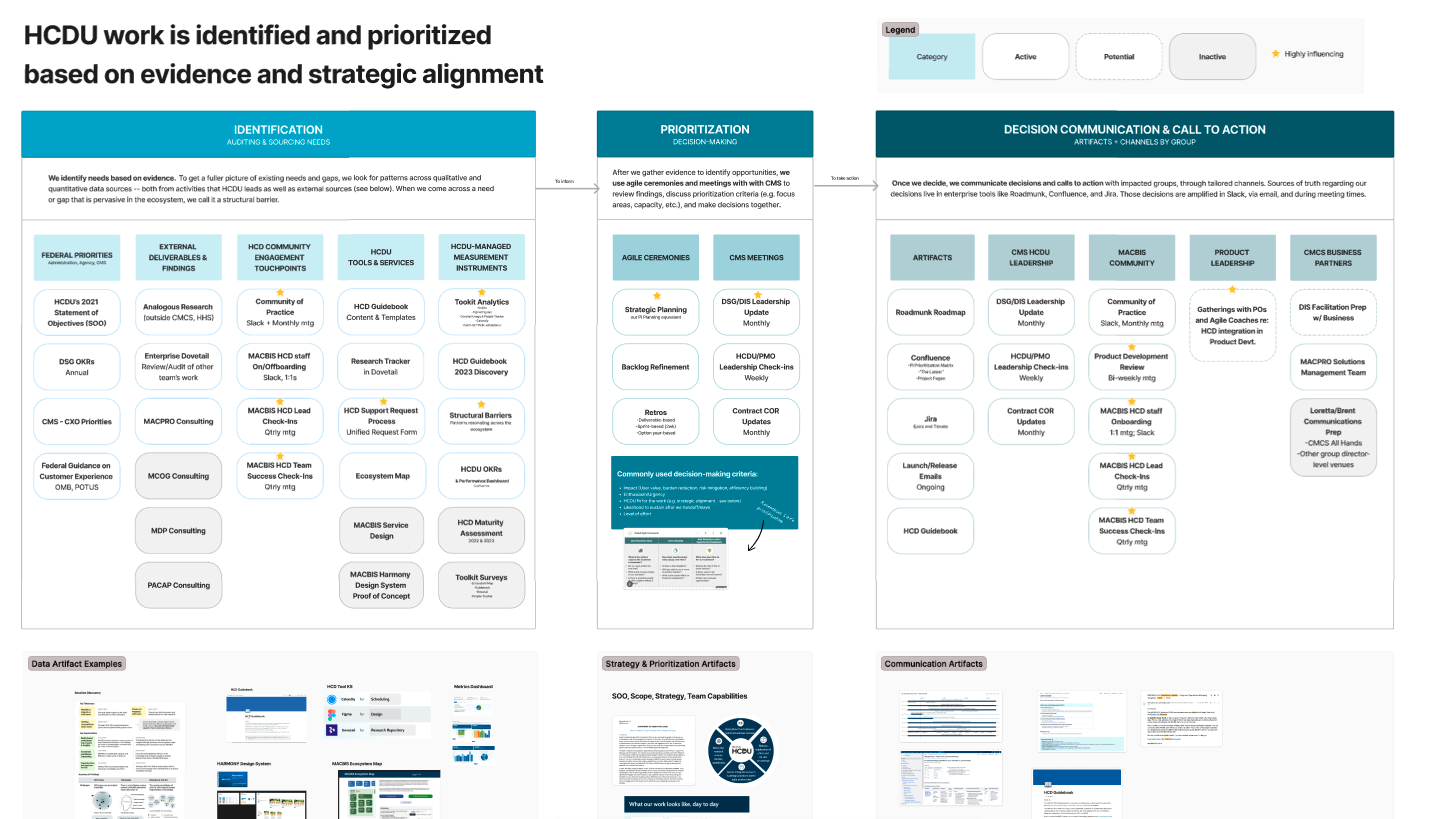
“We [use] so many systems…
The biggest problem is our systems don’t talk to each other.”
Summary and Impact
Government program analysts and managers had to navigate more than a dozen siloed, bespoke data systems to complete administrative tasks. The experience was uneven and onerous, taking precious time away from doing policy work.
As Design Lead, I co-managed a portfolio of enterprise initiatives to unify the user experience across 12 data products for 500+ government staff. In lockstep with the Product Lead, I led portfolio planning, scoping, team operations for a 10-personal cross-disciplinary team. My work laid the scaffolding for team members to create, maintain, and improve tools and standards that were used thousands of times in enterprise operations.
Major team achievements:
Garnered executive support to build a unified interface for all enterprise data systems
Promoted consistent web interactions and communication design with our Illustration Library and Design System
Reduced duplicative effort with our Human-Centered Design (HCD) Guidebook, which was a model for other agencies
Cultivated shared purpose across team silos through a dynamic, 100+ person HCD community of practice and an interactive Ecosystem Map
Below are sample tools our team created. I list my individual contributions in the sections that follow.
HCD Guidebook
Illustration Library
Unified System Architecture Concept
Ecosystem Map
Credits to the talented team: Chris Oliver, Paul Weiss, Rebecca Bruno, Felix Gilbert, Sara Camnasio, Kit Miklik, Kevin Shaw, Nick Weinel, Bronwyn Clarke, Cierra Washington
My Contributions
Portfolio Strategy and Roadmapping
I worked with the team to frame our portfolio’s strategic goals and priority work streams based on discussions with executive sponsors, product teams, and contractors across the enterprise.
I also created visual roadmaps to demonstrate how our work streams aligned with business priorities, identify issues and risks we were monitoring, and justify how we allocated resources.
Strategic goals and visual roadmaps outlining business value, resourcing, and risks
Priority recommendations
Framework for defining opportunities and priorities, and communicating our strategic decisions
Team Building and Planning
Some of the ways I fostered a supportive and effective team:
Planned storytelling sessions to celebrate the impact of the team’s work
Facilitated team alignment workshops to create clarity around our goals.
Hosted deliverable reviews to provide internal feedback ahead of client meetings.
Ran bi-weekly retrospectives to iteratively approve our approach, shout-out teammates, and share internet memes
Visioning activities
“Gallery of Wins” showcasing team successes
Sprint planning and review board
Program Wrap Party, inviting back three years of team alumni
Lessons
Standards are most effective when the guidelines are embedded into staff onboarding as well as ongoing operations and maintenance workflows.
Executive championship—such as setting an enterprise-wide adoption deadline—can help individual teams prioritize implementing new standards and practices.

